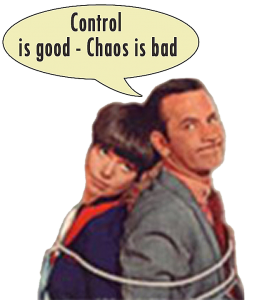
Control is a process used by managers to direct, regulate, and restrain the actions of people, so that the established goals of an enterprise may be achieved.
KEY TERMS: COST CONTROL:
Process used by managers to regulate costs and guard against excessive costs.
- STANDARDS: Rules or measures established for making comparisons and judgments.
- STANDARD PROCEDURES: Procedures that have been established as the correct methods, routines, and techniques for day-today operations.
- BUDGET: Realistic expression of management’s goals and objectives expressed in financial terms.
- CONTROL SYSTEM: Collection of interrelated and interdependent control techniques and procedures in use in a given food and beverage operation.
CONTROL IS AN ON-GOING PROCESS
1. Establish standards and standard procedures for operation.
2. Train all individuals to follow established standards and procedures.
3. Monitor performance and compare actual performance to standards.
4. Take appropriate action to correct deviations from standards.
1. Establish standards and standard procedures for operation.
2. Train all individuals to follow established standards and procedures.
3. Monitor performance and compare actual performance to standards.
4. Take appropriate action to correct deviations from standards.

Take a Control Test:
Look at your restaurant’s actual sales from last week and list your expected results for the six listed measurements. Were your actual results within 2% of your expected results? If you answered “No” or “Don’t know” for any of the measurements listed, you may have control issues.

Look at your restaurant’s actual sales from last week and list your expected results for the six listed measurements. Were your actual results within 2% of your expected results? If you answered “No” or “Don’t know” for any of the measurements listed, you may have control issues.

- Expected Food Cost
- Expected Bar Cost
- Expected Labor Cost
- Expected Supply Cost
- Expected Overhead Cost
- Expected Number of Covers
WHO’S IN CONTROL?
You are in control when events happen as planned.
Actual Results = Expected Results
HOW DO YOU GET CONTROL? Follow The Control Process Every Day!
• Create Standards and Procedures.
• TRAIN! TRAIN! TRAIN!
• Install Tools and Methods to Monitor Daily Performance.
• Evaluate Your Daily Performance and Adjust Your Planning.
…THAT’S MANAGEMENT!
